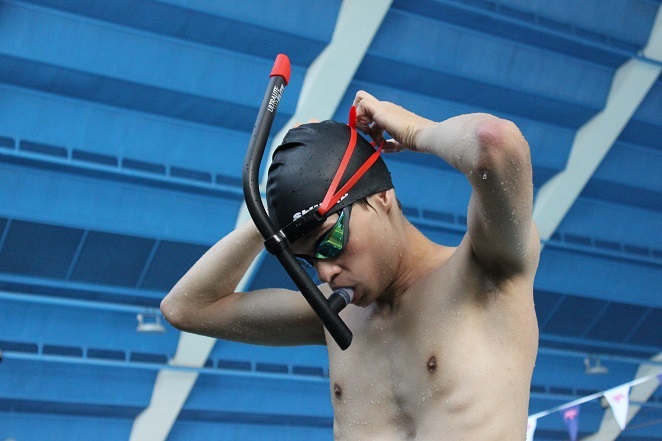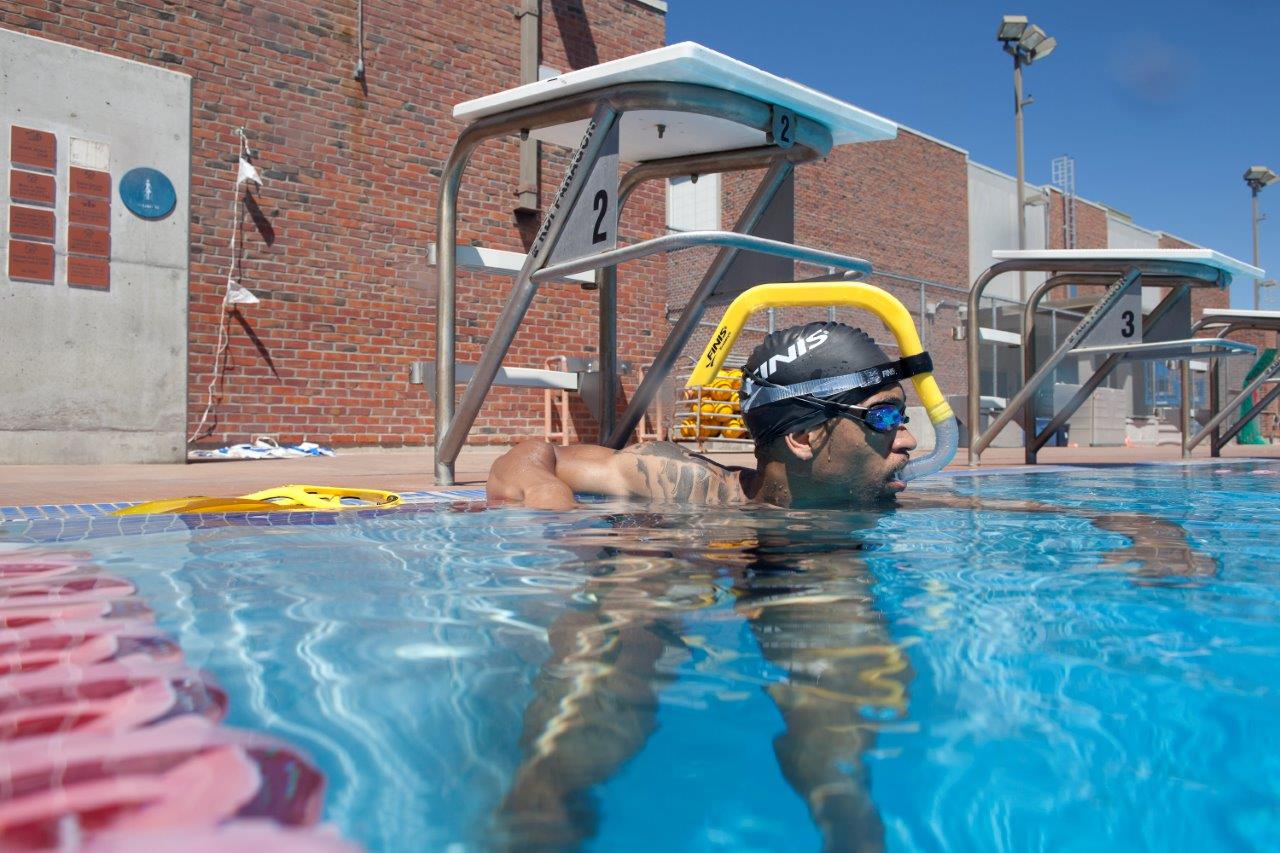We see the swim snorkels more and more often in the swimming pools because it’s becoming a very popular aid and a training tool. However, there are still a few questions surrounding this theme which we will clear up before buying one.
What is the difference between a swim snorkel and a diving snorkel?
First of all, it is important to clarify that there is a difference between a swim snorkel and a diving snorkel.
The swim snorkel or the so-called front or central snorkel
rests on the forehead and leads in front of the head, which is held by a silicone strap. While the diving snorkel goes along the side of the head and attaches to the silicone strap of the mask. With the swim snorkel, you can swim easily and quickly without vibrations and it will stay in place in your mouth and your forehead. Classic swimming with a diving snorkel is difficult, it doesn’t stay in place and it vibrates while swimming. For more skilled swimmers, flip turns with a diving snorkel are not possible at all.
Why use a swim snorkel?
Both, beginners and advanced swimmers will benefit from using a swim snorkel. Swimming with a snorkel allows you to keep your head down at all times. You can concentrate better on the perfect execution of the arm technique, so you don’t need to focus on the head and body rotation when inhaling or on flip turns.
Concentrating on the correct execution of the stroke without additional movements during the classic side breath can improve the feeling of the water.
No need to lift your head at all. Swim snorkels help with a straight body position. Many swimmers tend to raise their heads more than necessary when inhaling and this brakes the flow of the whole movement. The snorkel forces you to keep your head down and straight, which contributes to a better horizontal position.
The snorkel helps with kicks as well. The regularity of leg work is often interrupted during the classic side inhale. With the swim snorkel, you can fully centre yourself and make a regular kick.
It can also be used for hypoxic training (swimming with limited oxygen supply), aerobic training and increasing lung capacity.
Swim snorkels with a purge valve or without?
Higher-quality swim snorkels are imparted with a purge valve that prevents a large amount of water from entering the snorkel and makes it easier to blow it back if some water gets into the tube. The purge valve is located in the lower part of the snorkel. Swimming is much more comfortable with these purge valve snorkels.
Valveless snorkels for swimming are popular mainly because of the price. When water flows into the tube without the valve, it is significantly more difficult to exhale the water from the snorkel. Without adequate swimming practice with valveless snorkels, the rest of the water will always remain in the tube and interrupt swimming.
We can choose swim snorkels according to their purpose
Beginners should definitely go for a snorkel with a purge valve and a wider tube. They need a sufficient supply of air so that they don’t have to deal with the breathing technique and can fully concentrate on the swimming technique. The body doesn’t need to rotate due to the side inhale and the swimmer can focus on pure arm and leg work. For beginners, we recommend the
Finis Snorkel or the cheaper model the
Mad Wave Pro snorkel.
There are swim snorkels
for children specially designed for them. They are shorter and lighter than classic adult swim snorkels. This means that children swimming with them is easier and it’s easier to blow swollen water out of it as well. They are also better adapted to the child’s face shape and fit better.
Competitive swimmers can choose any
swim snorkel, and in addition, we recommend snorkels with the option of attachments for hypoxic training. The attachments are suitable for advanced swimmers who want to strengthen their lungs and swim with a limited amount of oxygen. With less air, the swimmer increases lung capacity and increases the ability of muscles to work even with lower oxygenation. Some manufacturers supply snorkels in a package with these attachments.
Triathletes and
open water swimmers in the sea also use snorkels when they train and want to improve their technique. They often use additional elements for the snorkel, such as a
breakwater, which specifically prevents water from entering the tube during waves. Snorkels with a longer or curved tube are recommended for outdoor swimming.
Final tip:
For better concentration and focus while swimming, it is advisable to be able to flip-turn with the swim snorkel. It takes some practice to hold your breath before the turn, then exhale more forcefully into the snorkel after the flip-turn and push out the water that has flowed into the tube during the turn.



